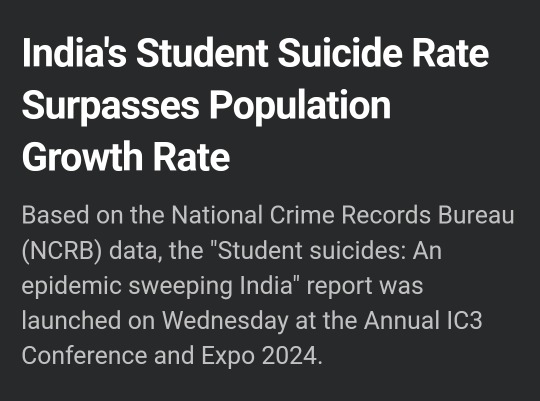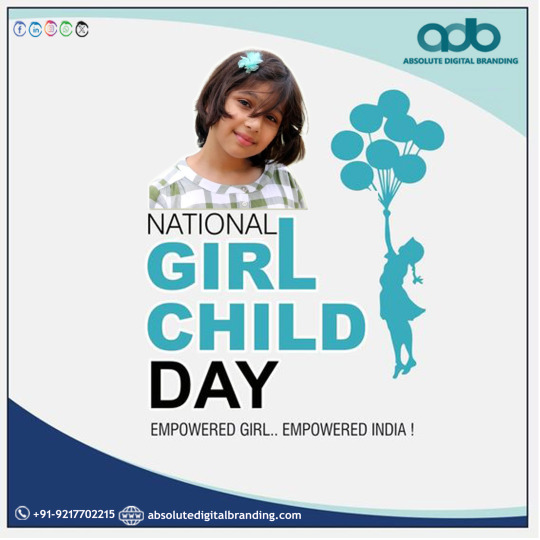#Educate A Child India
Explore tagged Tumblr posts
Text

Explore the Impact of the Best NGO in India: Empowering Children and Communities Discover the transformative power of one of the best NGOs in India, dedicated to empowering children and communities across the country. With a focus on child welfare, education, and family strengthening, this NGO plays a pivotal role in creating sustainable solutions that shape brighter futures. Whether through providing essential support for orphaned children, fostering community development, or offering educational opportunities, the NGO ensures that every child’s potential is nurtured. Their efforts are a testament to their commitment to improving the lives of vulnerable populations in India. By choosing to support this cause, you’re helping to create a lasting impact that resonates across generations. Join hands with one of the leading NGOs for children in India and be part of the change that is making a real difference. Visit the website today to learn more about their initiatives and discover how you can get involved.
#best ngo in india#Best Ngo To Donate In India#NGO For Child Care#Donate For Child Education#CSR NGO Partnership#ngo in pondicherry#Child Welfare NGO#Ngo In Guwahati#ngo website in india#ngo in hyderabad#Sponsor A Child In India#Sponsor A Child Education#foster care india#NGO For Children In India#Donate On Birthday#Child Care NGO#Educate A Child India
0 notes
Text
Sponsor A Child in India with SOS Children's Villages of India
You can trust us
Having established 440 homes in 32 SOS Villages in India in the last 52 years, we are one of the largest self-implementing NGOs in the country, providing for over 25,000 children currently. We are the first child care NGO to get a CRISIL accreditation and are privileged to lead the world’s largest child care movement.
#Sponsor A Child In India#Child Sponsorship In India#How To Sponsor A Child In India#NGO For Child Care#Sponsor Child Education India#Sponsor A Child#Donation For Child Education#Child Care NGO#Donation For Child Care#Strengthening Families Program#Donate For Child Education#NGO For Child Education#Donation For Child#Donate Now#NGO For Children In India#Donate For Education In India#NGO In Varanasi#NGO In Bhopal#Education Sponsorship In India#Educate A Child India#Child Education NGO#NGO In Bhubaneswar#NGO In Raipur#NGO For Children#Best NGO For Children#NGO In Shillong#Children NGO In India#Donate To Orphans In India#Child Welfare NGO#NGO Child Care
0 notes
Text
BABE WAKE UP NEW LOW JUST DROPPED.

source
#India is in shambles rn#The most depressing realities of current times:#a student doctor was gang-raped and killed inside a hospital and the govt and police and the hospital authorities worked together#to destroy evidence and cover up the crime as a suicide and called the doctor *psychotic*. They asked *what was she doing so late?*#rape occurs every 16 mins in our country#every girl and woman I know including myself are TERRIFIED#every damn day there are brutal cases of rapes of children. Literal 3 year olds. To students teenagers.#in school in home in public transport in a hospital#And what is our govt. doing? Making this into a politicized mess blaming each other instead of ANYONE fixing ANY problem#our streets are strewn with public protests EVERYDAY#women don't have the right to safety in our country#WE ARE TERRIFIED TO EXIST#BCZ NO MATTER WHAT- OUR BODIES AND VOICES AND POSITIONS ARE PROVOKING TO MEN.#AND NOW THIS#I don't even NEED to talk about the education system of our country anymore bcz you can clearly see the news heading.#Our future is doomed. Our safety is doomed. Our lives are doomed.#But sure yeah India has great street food and amazing movies 👍🏽#We're utterly exhausted#India#Desi tag#moumita debnath#tw murder#tw r4p3#tw r4p3 mention#tw sui mention#tw sui#tw child death#tw child abuse#tw csa#desiblr
7 notes
·
View notes
Text

The Chikupiku Foundation: Empowering Children Through Education and Culture
The Chikupiku Foundation is dedicated to enriching the lives of children by promoting education and preserving Marathi culture. Through engaging storytelling sessions, cultural activities, and reading programs, we inspire young minds and foster a love for learning. Our initiatives focus on empowering children, particularly in rural and underserved areas, to build confidence and stay connected to their heritage.
Support Child Education: Help us continue making a difference in children's lives through education and cultural enrichment. Donate Now
#the chikupiku foundation#education ngo in pune#value education and life skills#volunteering in pune#donate now#donate for education#donate for child education#donation for kids#donors for education in india
2 notes
·
View notes
Text
Providing Education for Underprivileged Children

Education is a vital human right, and it is our moral and social role to ensure that all children, regardless of background, have access to a high-quality education. India, as a growing developed country, has made advances in many major disciplines, but education, for example, is struggling. This conflict is obvious because statistics show that a large proportion of schools are unable to provide education to kids due to inadequate facilities and a restricted number of teachers. The situation worsens and serves as a potential excuse for the majority of pupils to stop their education or to avoid attending school altogether.
Read More: https://www.aahwahan.com/education
#NGO for Education#educational NGOs#ngo education#ngo for child education#ngo for education in india#ngo help for education#ngo in india for education#ngo who help for education#NGOs for education
3 notes
·
View notes
Text
#sponsor child education india#sponsor a child#educate a girl child in india#ngo for child education#save the children india#isha education#sos children village#crowdfunding#fundraiser#crowdfund#gofundme#donation#fundraising#best ngo in india#best charities india
10 notes
·
View notes
Text
Children Must Learn Robotics! Here’s Why?

According to recent studies, artificial intelligence, robotics, machine learning is defining our present and will shape our future. To compete successfully and live a life of self-esteem, children must not only be intelligent but also technologically smart. Robotics education is their best companion in this regard. Robotics is a practical method to introduce children to programming concepts and structure building as well as engineering.
The engaging application of robotics for kids helps to develop a strong base of creativity, innovation and rational thinking. It not only makes children critical thinkers but also strengthens their logical capabilities. Moreover, children turn out to be life-long learners as they nurture their sense of curiosity.
In this blog, we’ll explore that "Children Must Learn Robotics! Here’s why?"
#robotics#child development#children#robotics for kids#Robotics for Children#Robotics Education#Robotics for Child#Robotics Education India
2 notes
·
View notes
Text


#A Girl Child Brings Joy#She Is No Less Than a Boy. Happy National Girl Child Day!#EveryGirlEmpowered#BetiBachaoBetiPadhao👭#GirlChildDay#Stangels#Girl#NationalGirlChildDay2021#nationalgirlchildday#savechildday#india#nationalgirl#indiangirl#child#education#Marktingstrategy#SEObrandingagency#SEO#PPC#SMO#SMM#SeoCompany#digitalmarketingcompany#socialmediamarketingcompany#absolutedigitalbranding#searchengineoptimization#advertisingagencyinmohali#facebook#twitter#marketingonline
3 notes
·
View notes
Text
Most Trusted NGO For Child In India
Aparigraha Trust is the best NGO for child in India that focuses on providing quality education and holistic development opportunities to children from marginalized sections of society, particularly the Musahar community. They have a school in Varanasi that caters to the educational needs of underprivileged children.

#Child Care Society Ngo In Varanasi#Child Welfare ngo in varanasi#ngo in varanasi up#education ngo in varanasi#Varanasi based non-profit org for education#child welfare organization in india#Top ngo in varanasi up#best ngo for child in india#child care ngo in varanasi uttar pradesh
2 notes
·
View notes
Text
Providing Quality Education to Underprivileged Girls in India With Nanhi kali.
By donating to Nanhi Kali, you can help break the cycle of poverty and empower these girls with the tools and opportunities they need to create a better future for themselves and their families. Join the movement to support girl child education in India and make a lasting impact on the lives of these young girls.
#Donate#Sponsor#Support Girl Child Education#NGO for Education of Girls in India#charities#youcaring#fundraising#donations
3 notes
·
View notes
Text

"National Girl Child Day"#trending#viral
On January 24th each year, India dedicates a day to honor and empower the girl child through National Girl Child Day. This significant day serves as a vital reminder of the persistent inequalities that many girls face across the nation. In our latest we explore the themes of education, nutrition, legal rights, medical care, and the overall safety of girl children in India.
Call:7799799221
Website:www.manasadefenceacademy.com
#nationalgirlchildday #girlchild #educationforgirls #girlsempowerment #nutritionforgirls #safetyforgirls #legalrights #healthcare #supportgirlchildren #genderinequality #childrenrights #girlseducation #awareness #advocacy #empowerment #indianwomen #childwelfare #equality #socialchange #girlpower
#national girl child day#girl child empowerment#education for girls#nutrition for girls#safety for girls#legal rights for girls#girls in india#national girl child day 2023#equality for girls#healthcare for girls#girl child issues#women's rights
0 notes
Text
Explore Leading NGO Websites in India: Supporting Children and Community Development
SOS Children’s Villages India is one of the leading NGOs in India, dedicated to supporting the welfare and development of children in need. The organization’s website offers a comprehensive look at its mission, programs, and ways for individuals to contribute to creating better futures for children. As one of the top NGOs for children, SOS Children’s Villages focuses on providing a safe and nurturing environment for children, including access to education, healthcare, and emotional support.
This NGO works across multiple regions in India, helping children who are orphaned, abandoned, or at risk. With a focus on long-term care and family-based solutions, SOS Children’s Villages offers children a sense of stability and the opportunity to thrive in a family-like environment. Through their website, individuals and organizations can learn how to support these initiatives, including sponsoring a child, contributing to education funds, or partnering for larger social impact.
SOS Children’s Villages' website not only shares success stories but also provides detailed information on how every donation helps improve the lives of children and communities. It serves as an invaluable resource for those looking to make a difference. The platform emphasizes transparency and engagement, ensuring that donors and partners can track the positive outcomes of their contributions.
Explore the website to learn more about how you can get involved in this life-changing work. By visiting the best NGO website in India, you’re taking the first step toward empowering children and creating lasting social change.
#best ngo for children#child sponsor#child welfare ngo#csr ngo partnership#donate for child education#donate now#donate on birthday#donation for child care#donation for child education#educate a child india#ngo website in india#ngo in hyderabad#best ngo in india#Best Ngo To Donate In India#Ngo In Guwahati#ngo in pondicherry#CSR NGO Partnership#NGO For Child Care
0 notes
Text
SOS India | Closing the Education Gap for Underprivileged Children in India
Education is the key to unlocking one's potential and breaking the cycle of poverty. However, in India, millions of children from underprivileged backgrounds are still denied access to quality education. This results in a widening education gap that perpetuates the cycle of poverty and hinders the development of the country as a whole.
Lack of Access to Education for Underprivileged Children in India
According to a recent study, students from low-income families are less likely to have access to educational resources and have higher drop-out rates, compared to their peers from wealthier families. According to the World Bank, over 50 million children in India are not in school, and nearly 60% of the children who do attend, drop out before completing their secondary education.
This is largely due to poverty and the lack of infrastructure and resources in these areas. Children from these backgrounds are often forced to drop out of school to support their families or to work as child labourers. This deprives them of their right to education and the opportunity to improve their lives and their communities.
Further, this situation exacerbates the existing disparities between different socioeconomic groups, leading to a vicious cycle of poverty and inequality.
The good news is that there are charitable organisations and NGOs for child care working tirelessly to bridge this gap and provide education for underprivileged children in India.
NGOs for Child Education in India
SOS Children's Villages of India is working to address this issue by providing quality education to underprivileged children. Through our various programs, we provide education, health care, and other support services to children from marginalised communities.
We also run schools in rural areas where there is a shortage of educational facilities, providing education to children who would otherwise be denied this opportunity.
In the words of the famous education reformer Horace Mann, "Education, then, beyond all other devices of human origin, is the great equaliser of the conditions of men, the balance-wheel of the social machinery."
Education truly has the power to bring about positive change in the lives of underprivileged children and make a real difference in the world. By providing education to underprivileged children, we can empower them to break the cycle of poverty and create a brighter future for themselves, their families, and their communities.
Donate Today to Bridge the Education Gap
Closing the gap in education for underprivileged children in India requires a collective effort from all sectors of society. Childcare NGOs and charitable organisations, such as SOS Children's Villages India, are working tirelessly to provide education to these children.
However, we cannot do it alone. We need the support of individuals and organisations to help us reach our goals. By donating to NGOs for child care in India, you can help bridge the education gap and provide education to children who need it the most.So, if you believe in the power of education and want to make a difference in the lives of underprivileged children in India, please consider donating to SOS Children's Villages India. Together, we can help to close the education gap and create a brighter future for all.
#NGO In India#NGO For Children#Top NGO In India#NGO For Children In India#Charities In India#Charity Organizations In India#Best NGO For Children#Educate A Child India#Education Charities#Child Education NGO#Donate To Education Charity#Child Education In India#Education NGO#NGO For Child Education#Empowering Children#Online Donation India#Donate To Charity In India#Donate India#Donate Now#Donation For Child Education#Donate On Birthday#Donate For Education In India#Donation For Child#Donate For Child Education#Donate To Orphans In India#Education Donation#Education Sponsorship#Sponsor A Child In India#Sponsor Child Education India#Child Sponsorship In India
0 notes
Text

Plan India - Donate for Girl Child Education | Girl Education Ngo India We believe that all children, particularly girls from poor and disadvantaged families, access and complete education from pre-primary to secondary levels, thus realising their right to inclusive and quality education. However the realities reflect inequitable access to Early Childhood Education; poor learning outcomes in early grades which leads to learning deficits; discriminative social norms, gender-stereotyped curriculum and lack of an inclusive, protective environment within the schools. To address these barriers and to ensure all children, particularly vulnerable girls from excluded communities realize their right to an inclusive and quality education, Plan India has taken multipronged approach which includes
#Donate for Girl Child Education#Girl Child Education Donation#Girl Education Ngo India#NGO for Girl Child Education Delhi#NGO for Child Education#NGO for Children Education
0 notes
Text
#NGO Working For child Education In Mohali#NGO for free education#NGO Working For Education#Education NGO In Mohali#NGO Working For Education In India
0 notes
Text
Child marriages and child labour have become ways for many impoverished and indebted families to make ends meet.
Over 150 million children and teens worldwide are victims of child labour, with India historically ranking among the worst offenders, according to the International Labour Organisation (ILO).
In the nation, about 10 million children and teens between the ages of five and fourteen are compelled to work, frequently as a result of bondage and human trafficking.
A greater percentage of minors are engaged in the $8 billion sector that produces pornographic material. According to the data from the previous year, there has been an increase in child trafficking, child sexual abuse, child trafficking, child radicalisation, and the use of minors for drug misuse. Furthermore, the data service providers are entirely accountable for such, and there is no international law to regulate them.
The COVID-19 pandemic has led to an increase in child trafficking in India. Since the worldwide lockdown, the number of trafficking cases in New Delhi alone has increased by 68%. Since minors are utilised as labour, many of these incidents include more than just kidnapping.
Child marriages and child labour have become ways for many impoverished and indebted families to make ends meet. Examining the "fine print" of this law reveals gaps that do not forbid child labour among minors aged 16 to 18. Child labour and trafficking in India are permitted to persist because traffickers take use of these loopholes to continue their exploitation without facing immediate legal consequences.
Children should have access to education and a well-rounded upbringing. Illegal labour and trafficking only hurt children and their capacity to develop in a secure setting. Children raised in such conditions cannot be expected to perform well by society. Corruption is to blame for their potential to endanger the country and society. According to official figures, the state of Assam has the highest rate of child trafficking in India. Traffickers promise parents that they will educate the children when they purchase young females for a few thousand rupees. Dead bodies are the only ones that return home sometimes.
It is all about parents sell children for money especially girls. We have not yet discussed the children are being missing from the hospitals and handed over to the families who can provide money to the hospitals. India at least need to remove corruption in it.
No media has still tried to know the response and work of child labour helpline. What if any ordinary person lodge a complaint regarding child labour around them through helpline?
0 notes